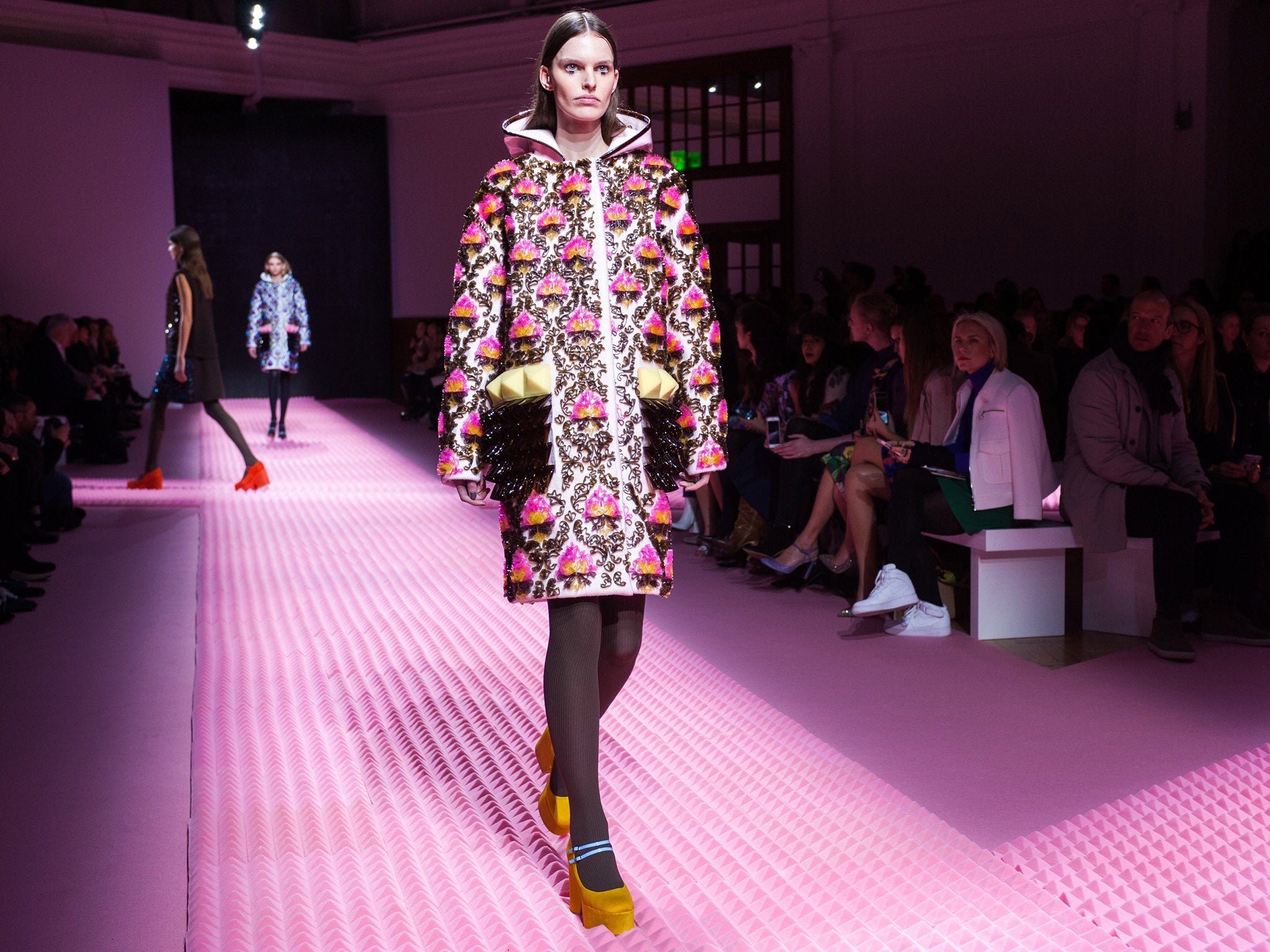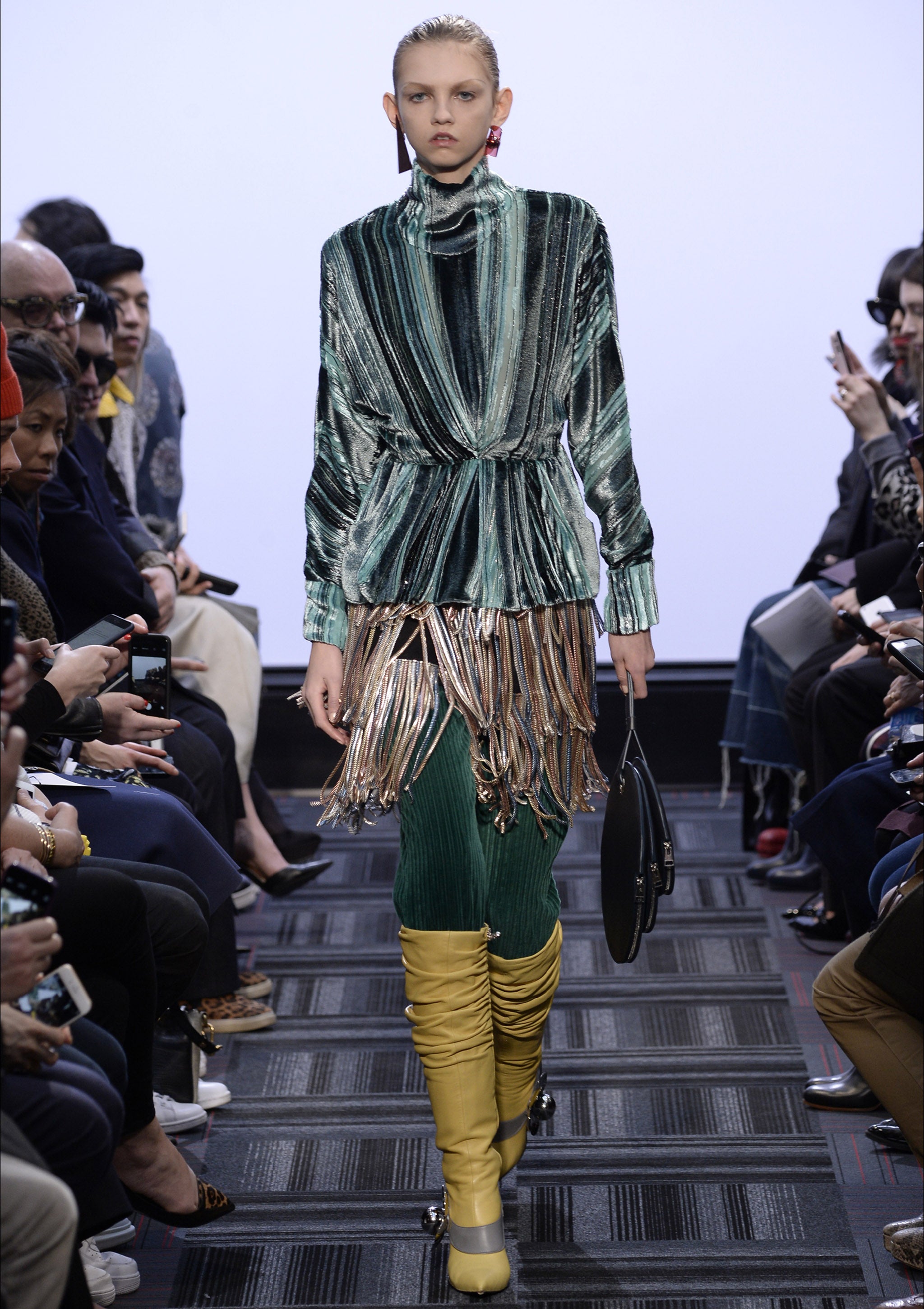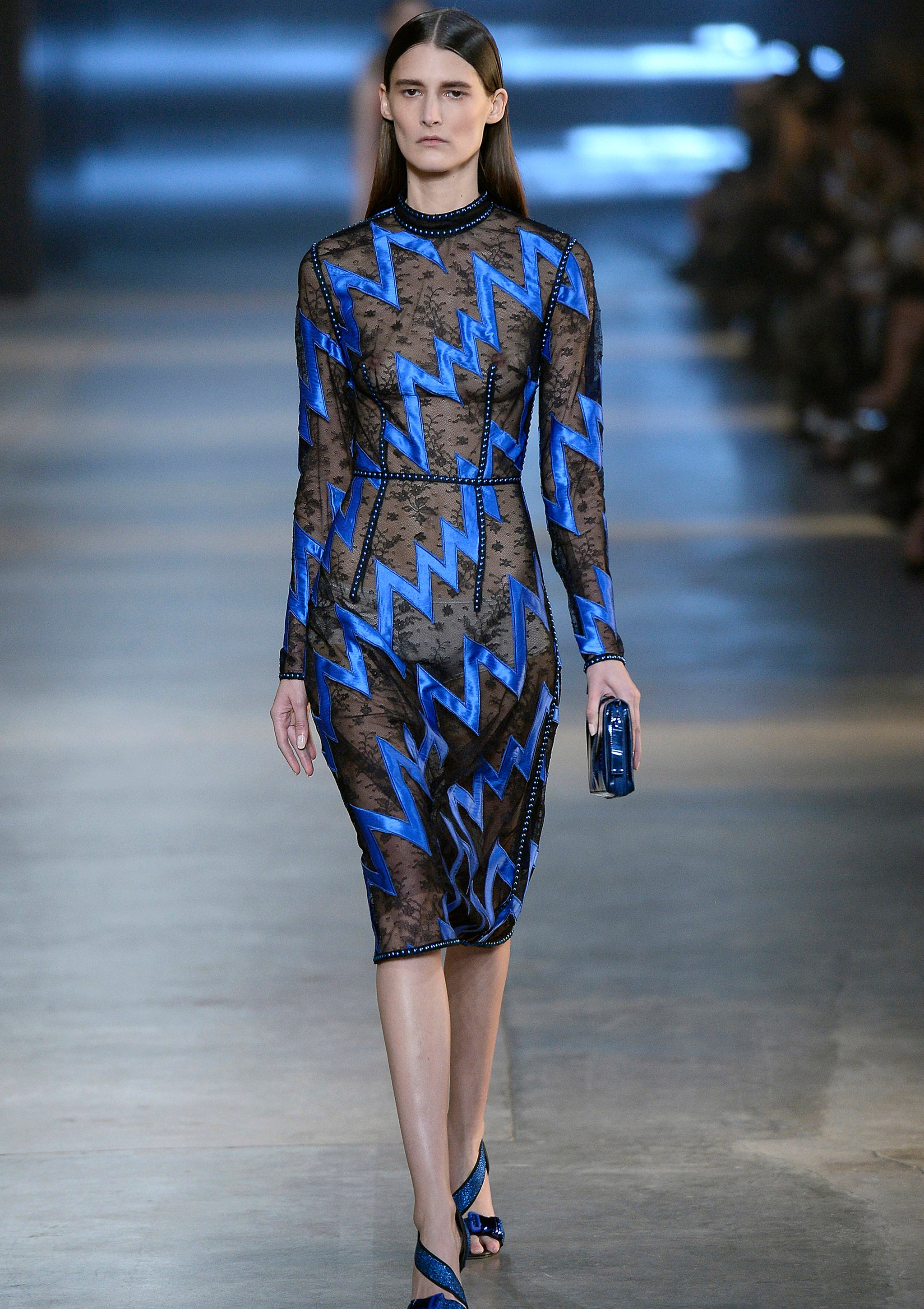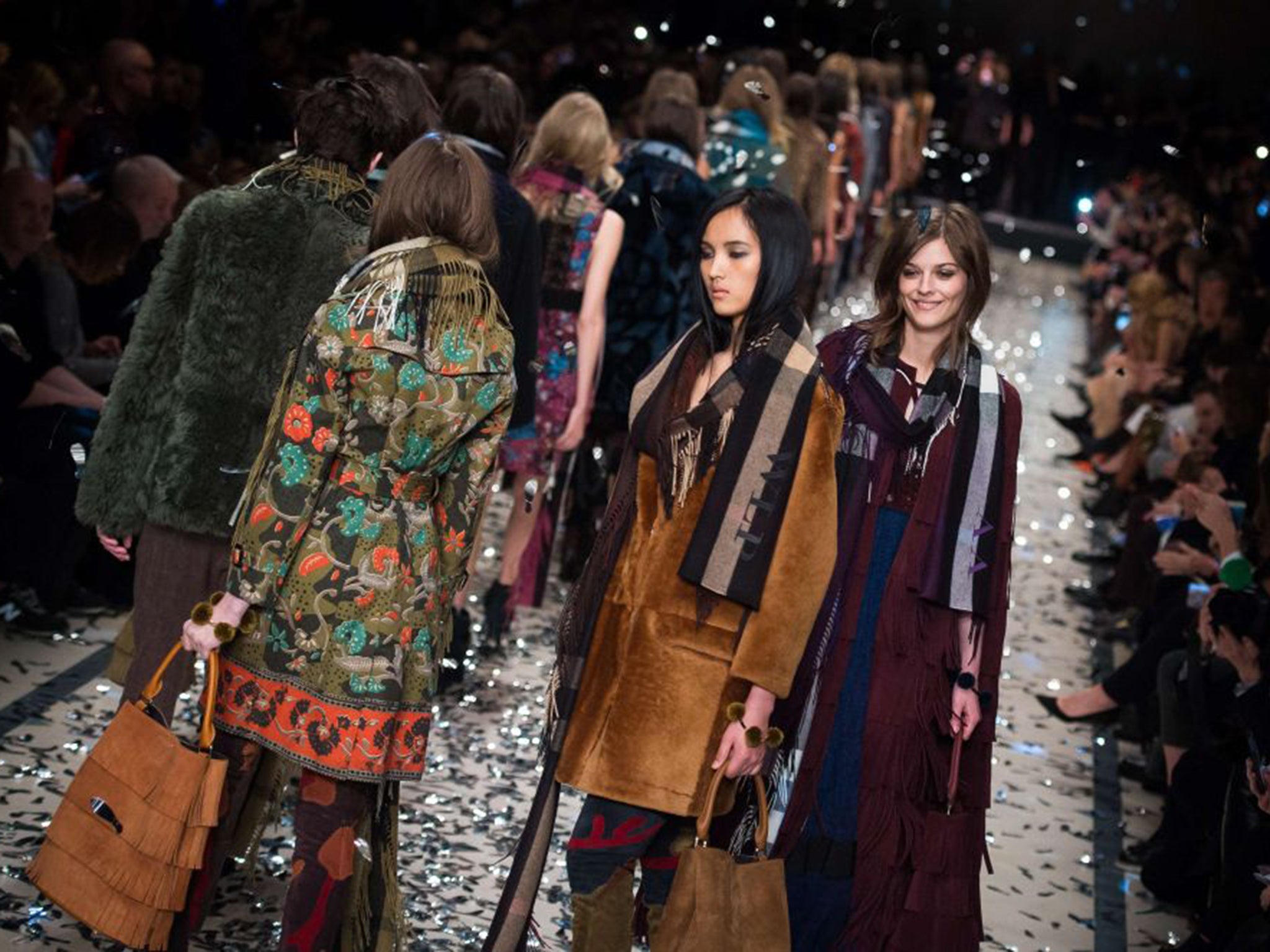London Fashion Week roundup: Growing pains - how a gridlocked London fashion scene can make the next move
London fashion has expanded and established itself as not only a creative must-see, but a commercial must-have

Your support helps us to tell the story
From reproductive rights to climate change to Big Tech, The Independent is on the ground when the story is developing. Whether it's investigating the financials of Elon Musk's pro-Trump PAC or producing our latest documentary, 'The A Word', which shines a light on the American women fighting for reproductive rights, we know how important it is to parse out the facts from the messaging.
At such a critical moment in US history, we need reporters on the ground. Your donation allows us to keep sending journalists to speak to both sides of the story.
The Independent is trusted by Americans across the entire political spectrum. And unlike many other quality news outlets, we choose not to lock Americans out of our reporting and analysis with paywalls. We believe quality journalism should be available to everyone, paid for by those who can afford it.
Your support makes all the difference.There are big changes going on in London fashion. It’s reached a tipping-point. The capital’s fashion week began with a memorial for Professor Louise Wilson, former head of Central Saint Martins’ MA course, whose graduates shore up the schedule.
It closed with an award ceremony thrown by Elle magazine, which hurrahed various talents but saved special mention for the British contingent: Erdem Moralioglu won designer of the year; the British-born (but New York showing) Stuart Vevers of Coach, and Katie Hillier and Luella Bartley of Marc by Marc Jacobs, received awards for accessories and contemporary brand respectively.
And in between? Well, there were some fashion shows. A few were memorable. Most were not.
That’s the issue. London seems to be in the middle of an identity crisis. Once the runt of the quadrilateral, bi-continental fashion circuit – with plenty of creativity but zero financial clout – London now has the pull of a clutch of advertisers, as well as young(ish) designer names who’ve sold big to multinational luxury conglomerates.

Add to that the independent success stories of designers such as Mary Katrantzou and Erdem, whose businesses make a tidy turnover (the latter is opening his first boutique this year, the former does swift online retail via her e-commerce site), and London has lost its ill-gotten repute as a fashion hub where, alas, it was impossible to build a commercially viable company.
The danger, however, is that London may lose its reputation for design innovation. Because, although some shows were good in London, none were great. Certainly, it’s difficult to identify shows of a world-class standard, shows that felt as if they were setting the fashion agenda – there are, admittedly, remarkably few of those globally – but we expect London to throw up something. Perhaps it’s an issue of context: London has been leading the pack for so long, we simply expect more from it. On the other hand, when you’re heaped with laurels, there’s the overwhelming urge to rest on them.
There’s also the need to sell. Which can frequently be an insidious influence on designers’ visions. The natural urge then is to look at what has shifted in volume in the past and to rehash rather than innovate.
That doesn’t mean copying – although plenty of that went on, mostly from the back catalogues of Miuccia Prada and Nicolas Ghesquière for Balenciaga – but it does mean reproducing that which we have already seen. Changing the colour or the fabric really isn’t enough to keep the press interested, although perhaps buyers will rebuy a bestseller in a different colour and weight. Those would seem like sure-fire hits – though it remains to be seen if consumers are quite so easily pleased.

That all sounds very negative. The overwhelming experience of London wasn’t negative – but it was a little deflating, designers seemingly thrashing in an ungainly fashion, trying to pinpoint how to move forward. Accessories designer Anya Hindmarch devoted her show to the M25 – and it felt fitting. London traffic throughout the week was gridlocked. The fashion seemed to be, too.
A small selection of designers marched ahead bravely – possibly blindly. JW Anderson’s show was an example. It seemed almost antithetical to his previous output, focusing quite so precisely on a single moment in history – namely, the early 1980s, resurrected in all their gory glory: wonky of peplum, garish of lurex, lumpy and bumpy, set to a Human League soundtrack. It was, at least, something different for Anderson; loved and hated in equal measure.

In the sequence of his work, you wonder if it marks a true departure for new pastures, or an entertaining but ultimately futile cul-de-sac. Because what Anderson has to say is interesting, in the landscape of London fashion. He’s one of those designers who a major conglomerate has seen fit to invest in – LVMH, who not only own a minority share of his brand but have also handed him the reins of Loewe – so even if you don’t admire his clothing, there is a stamp of validation that demands attention.
The Eighties were a point of reference for an odd number of collections: Christopher Kane’s thesis on seduction borrowed its colours from the assertive, sexualised power-dressing of the era. Marques’Almeida ran the brocade bustiers and puffballs of Christian Lacroix through the rinse, warping and fraying them until they felt fresh and punched with a new power.
Mary Katrantzou had a feel of Lacroix too, with her weighty embroideries and overload of visual stimuli – but she and Lacroix share a mind, rather than one using the other as a reference point. Her collection this season was inspired by horror vacui – a fear of empty space. She faced her fear, and it gave her collection a jolt.

Like Anderson, Thomas Tait – a breathtakingly young Canadian with a hubristic bent – has an LVMH stamp of approval. He won the organisation’s inaugural “Young Fashion Designer Prize” last year, which may sound a bit like a Post Office contest for schoolchildren but comes with a €300,000 (approximately £220,000) cash prize and a year of mentorship from the industry’s finest. It’s also judged by designers Raf Simons, Phoebe Philo and Nicolas Ghesquière among others. It’s a big deal.
Tait delivers on his promises. His clothes were excellent, exciting in their arciform shapes, luxurious in their textiles. They had a real sense of original design. One of Tait’s influences was director Dario Argento: it was, possibly, in emulation of his lighting effects that Tait blacked-out his venue and illuminated pale, mean strips for his models to walk down. That blind marching ahead – it made it impossible to see the clothes. At least you couldn’t accuse him of being overly commercial.
Is commercialism a problem, or a solution? It can be both. It has been a solution in cementing London’s prominence as a fashion capital, and the relevance of its designers’ clothes in the saturated global marketplace. (If they don’t sell, who will buy?) On the other hand, as the best talents prove, selling isn’t the same as selling out.
Join our commenting forum
Join thought-provoking conversations, follow other Independent readers and see their replies
Comments